As part of our fiber guide series, we need to start talking not just about cables, but also optics. One of the key questions those getting into optics may ask is what is the difference between a 100GBASE-SR4 and 100GBASE-LR4 optic. This is a quick guide to answer that question.
Differences Behind 100GBASE-SR4 and 100GBASE-LR4 Optics
Both the 100GBASE-SR4 and 100GBASE-LR4 are 100Gbps / 100GbE/ Infiniband optics and how they operate is in some ways similar, but also quite different in an important aspect. We are going to focus on the 100Gbps QSFP28 option here, but this also applies to the 40Gbps 40GBASE-SR4 and 40GBASE-LR QSFP+ optics.
Here is a quick breakdown to remember:
- 100GBASE – In this part, we can look at the 100G and remember 100Gbps. That is why 40GBASE is 40Gbps
- LR/SR – The quick way to think about these is to remember SR is short for short-range while LR is short for long-range
- 4 – This means that we are using four transmit/ receive pairs
While the data rate may seem self-explanatory, some of the other parts may not.
With a 100Gbps optical interface, the 4 means that we need four pairs of transmit and receive, each providing roughly 25Gbps. A -SR4/ -LR4 module has four electrical interfaces and each runs at 28Gbps. That is why we call them QSFP28 modules. The same is for the 25Gbps modules found in many 25GbE installations that have one 28Gbps electrical interface and are thus SFP28 modules. This is also why we can break out a 100GBASE-SR4 connection into four 25Gbps connections with SFP28 transceivers on the other end.
These four pairs of transmit and receive go over fiber using two different methods. In SR optics, these are kept as distinct pairs. As such, a connection requires eight fibers to transmit 100Gbps speeds. Commonly MPO/ MTP-12 cable is used that has twelve fibers.
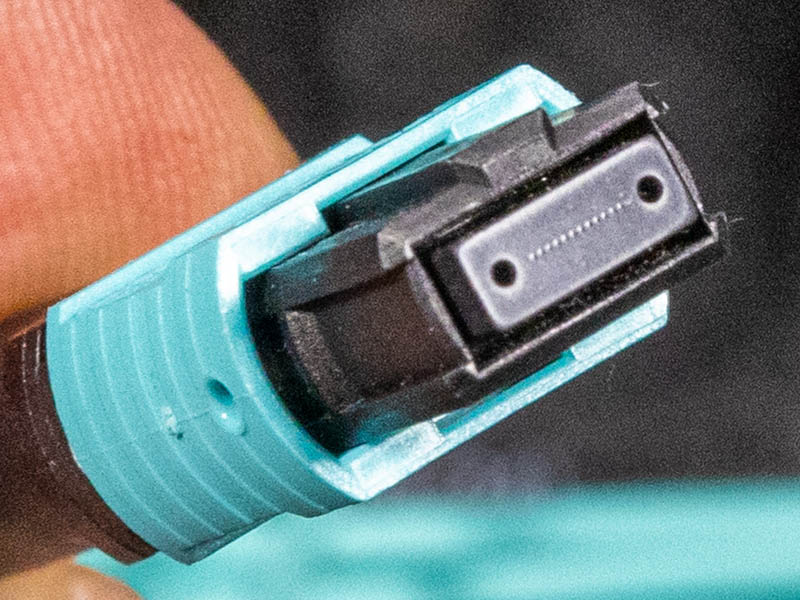
Four are used for transmit and four are used for receive while the remaining four remain dark. We are going to quickly note here that there is something called 100GBASE-SR10 that uses MTP-24 using 10 fibers for transmit and 10 fibers for receive with four remaining dark.
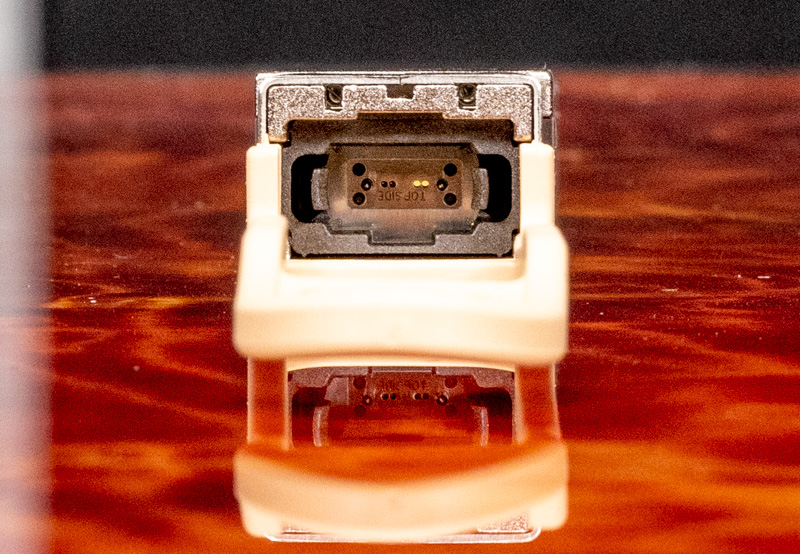
With 100GASE-LR4, each single strand of fiber carries four signals slightly offset from the 1310nm wavelength to avoid interference (SR4 uses 850nm.) Each of the four transmit sides are muxed to go over one fiber simultaneously while they are then demuxed at the other end to be received. As such, one only needs two fibers (usually via a LC duplex cable) to run 100GBASE-LR4 versus eight for 100GBASE-SR4.
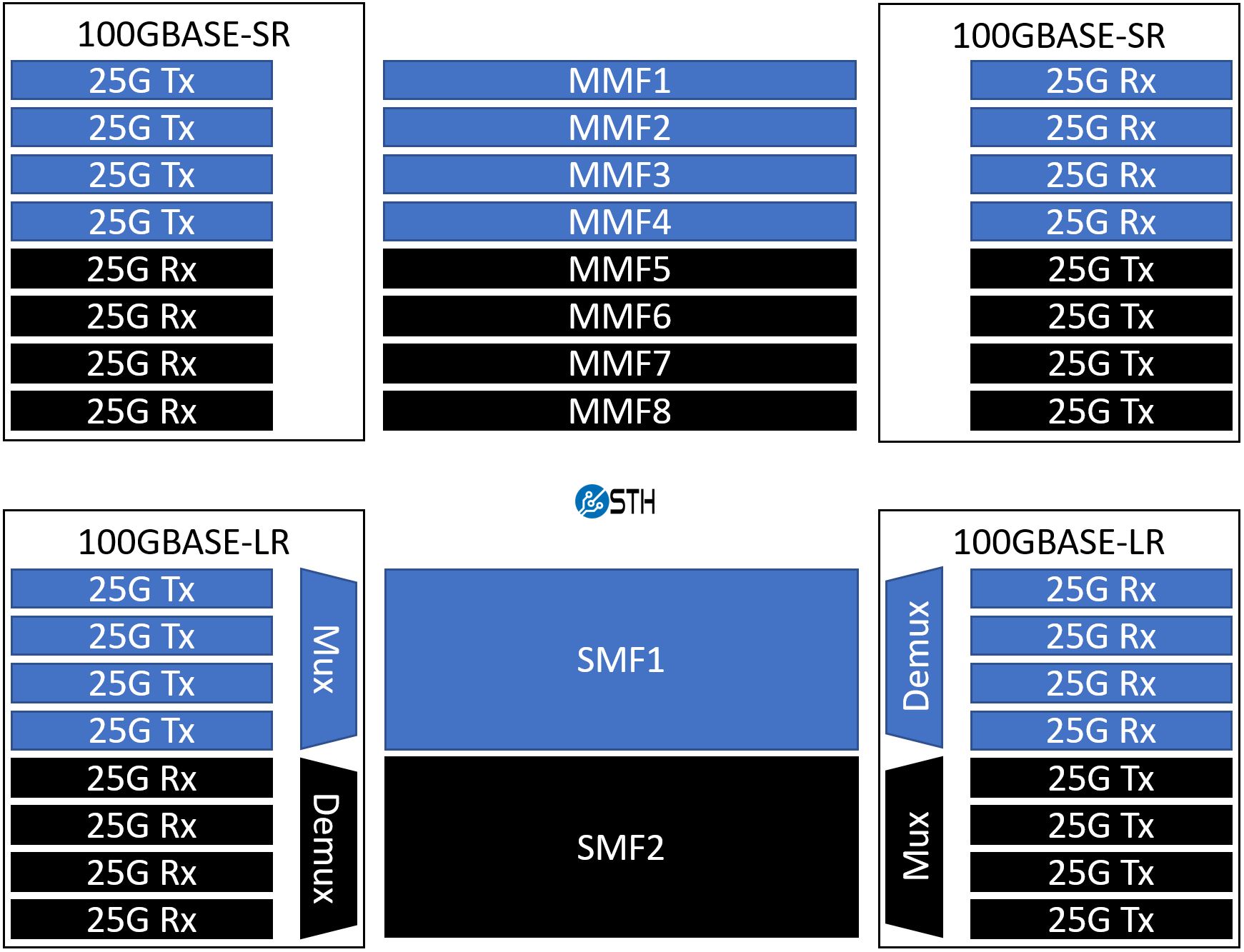
In terms of distance, the SR4 is usually rated for 100m on OM4 multi-mode fiber and 70m on OM3 multi-mode fiber. The LR4 is rated for 10km on single-mode OS2 fiber.
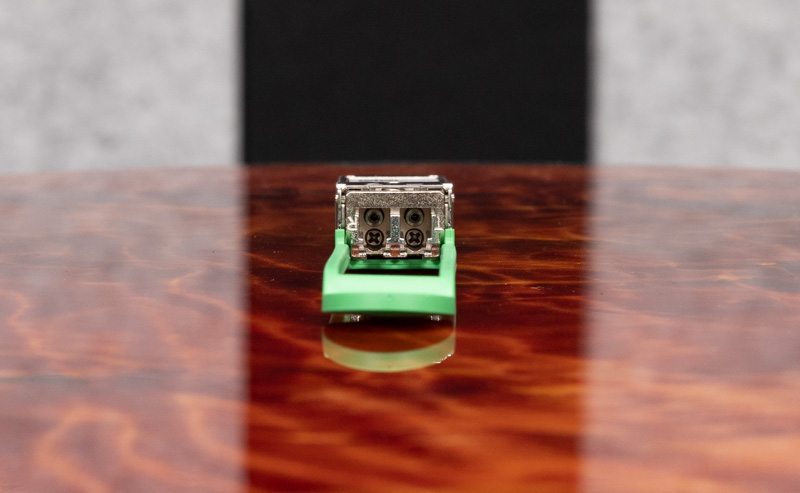
We are actually showing 100GBASE-CWDM4 modules instead of LR4 modules since those are what we expect most of our readers will use more of. CWDM stands for coarse wavelength division multiplexing. While 100GBASE-LR4 muxes four channels into different wavelengths between ~1295 to ~1310nm, 100GBASE-CWDM4 uses between ~1271nm and ~1331nm. CWDM loses range, but the coarse nature and shorter reach target distance allow for lower-cost components to be used in transceivers and often these are cooler with lower power consumption as well. CWDM4 is designed to bridge the gap between shorter reach and longer reach optics and has a 2km range instead of 10km on the LR4 and 100m on the SR4.
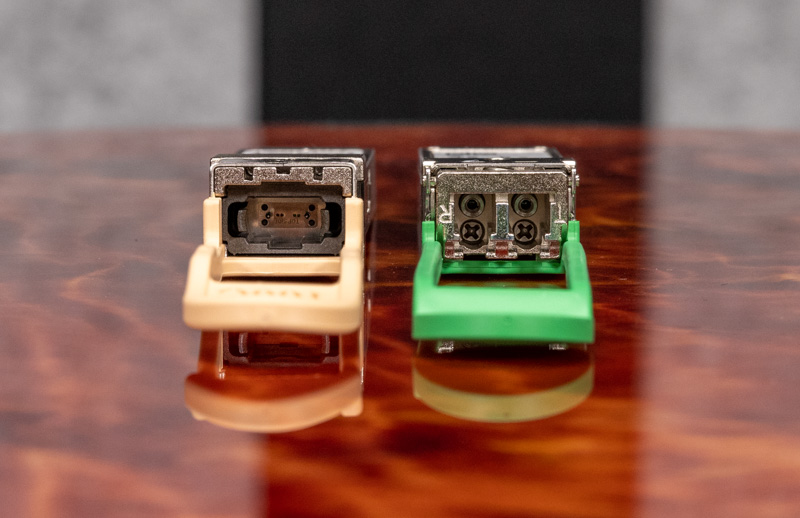
There is also a standard called 100GBASE-PSM4 that uses single-mode fiber for up to 500m runs. This uses a similar MPO/ MTP cable and uses eight strands just like SR4, except these are for single-mode instead of multi-mode so we get ~5x the range. One spends more on fiber, but spends less on transcievers.
Super Handy Table
There are other longer-range optics designed for >10km that we are not going to get into. We are also going to suggest our readers stick to mostly SR4, CWDM4, and LR4, since SR10 is much less popular. Here is a super handy table:

Note we are assuming OM4 for the multi-mode fiber and OS2 for the single-mode. One can either use MTP-8 or MTP-12, but MTP-12 is much more common and those are compatible. For SR4 just the outer four strands on each MTP connector are used, hence why the middle of the SR4 optic connector we are showing is solid.
Final Words
Hopefully, this helps you get a handle on what to look for. Effectively our recommendations are to use:
- 100GBASE-SR4 if you have MTP-8 or MTP-12 OM3/ OM4 fiber and 70m to 100m maximum runs. Likely these are within a row in a data center.
- 100GBASE-CWDM4 if you have single-mode fiber in a data center, and 2km works for distance. 2km is likely going to be fine in most buildings as an example.
- 100GBASE-LR4 if you need to go between 2km and 10km usually when you need to connect a building to another building
Hopefully, this helps make picking 100G optics a bit easier. There is a lot more going on in the world of optics, but these three are likely going to be the go-to types of QSFP28 modules for our readers.

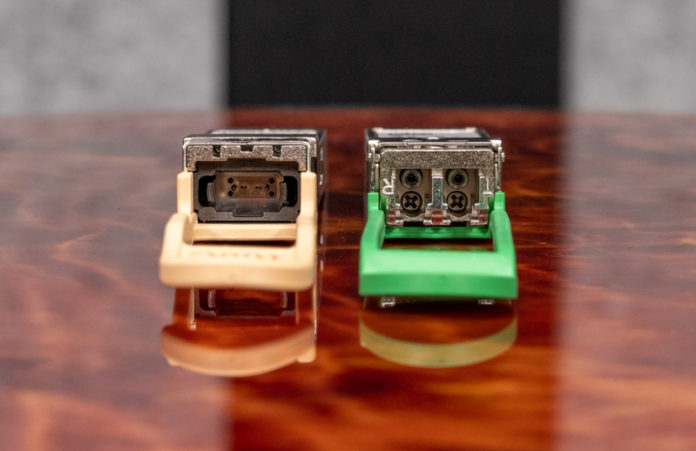



Could you also explain what OM3/OM4 stands for? The article just assumes people are familiar.
It is in the plan Nils.
Recently I had to visit this:
https://en.wikipedia.org/wiki/100_Gigabit_Ethernet#100G_interface_types on like daily basis
In my situation I had the following constraints:
try to avoid MPO, LR4 is pretty expensive especially router side, CWDM4 is proprietary and we had interop issues with them.
100Gbase-DR looks really interesting. Unfortunately this is pretty new standard and support / interoperability is not here yet.
With generic optics, SR4 isn’t worth it given the added cost of MPO cables. LR4’s can be used anywhere with already on hand single-mode jumpers. CWDM4’s can save some money, but we’ve run into issues where the optics are not supported by everybody.
What’s the difference between CWDM4 and LRM, I wonder?